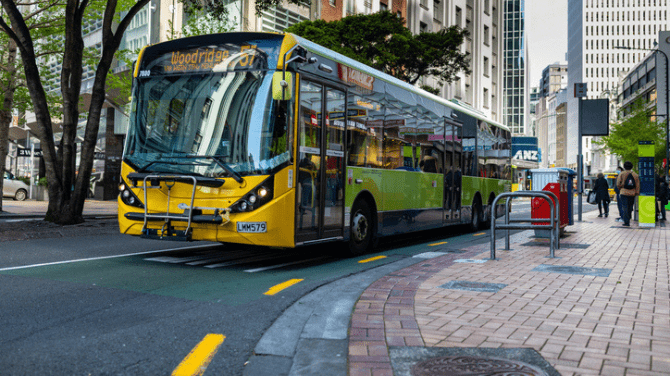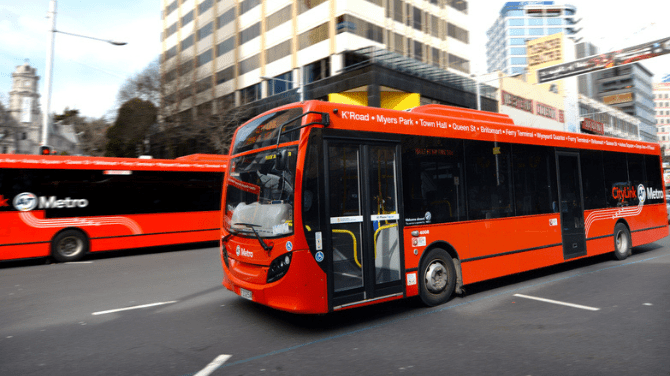Do times of change call for a shift in how we plan and make decisions?
The Government Policy Statement on land transport 2024-34 sets the balance between investing in new projects and ensuring we maintain and repair our existing infrastructure… sounds easy, right?
Well, it’s complicated.
A quick read of the media will confirm that recent rate increases have been unpopular. An emphasis that may be lacking, is that these increases were still on average below the rate of civil construction inflation. Despite this, ongoing investment is required to respond to a continually changing environment:
- weather events are getting more extreme and frequent, causing flooding, landslides and damage to roads
- vehicles are getting larger and heavier, increasing wear and tear on roads
- populations are ageing, as is our infrastructure
- cities are currently growing faster than regions, but may shrink in the future
- migration to and from New Zealand is unpredictable
- our climate is changing, but the impacts and timing are uncertain.
Wherever investment is prioritised, some people will be unhappy about the choices made, and make it known. This all makes being a decision maker in local government a real challenge. Add a necessary focus on economic growth to this complexity, and the longer-term view required;
- 10-year infrastructure plans
- planning for 30 years of housing growth
- climate planning to extend 100 years or more into the future.
And all against a backdrop of funding constraints.
The Government is requiring NZ Transport Agency Waka Kotahi (NZTA) to develop a Performance and Efficiency Plan across all transport investments. These will identify how NZTA, and all road delivery agencies, will improve management of benefits, costs, risk and uncertainty at the programme and activity class level. Government is also looking for improved asset management practices across the sector and for analysis to inform price/quality trade-offs.
With thousands of assets, can it be possible to chart an affordable path through all this change, the competin
g demands and unknowns – whilst bringing the community along on the journey?
Pathways
We tend to want certainty and stability, to make decisions and stick to them. But things happen and plans change. So, what if we planned in a way that accommodates that?
Figure 1 – ‘Past and future adaptation pathways’, SOURCE: Tammy E Davies via ResearchGate, modified from Wise et al., 2014
This is where Dynamic Adaptive Pathway Planning (DAPP) comes in. DAPP is a framework that was developed to address the challenges of decision-making under deep uncertainty. It enables planners and policymakers to create flexible strategies that can adapt over time, as conditions change or as more information becomes available, and is most commonly used in the context of climate change and long-term planning.
DAPP charts a series of actions in the short, medium and long-term, with signals and triggers to indicate points in time when decisions are required, to avoid an unacceptable threshold being reached. Benefits of a DAPP approach are that it:
- avoids locking in costly investment decisions that may end up being redundant or less effective if circumstances change unexpectedly
- provides a scalable approach which begins with a high-level strategic plan and some no- or low-regrets short-term actions
- as the plan is executed, more detail can be added over time to the strategic plan
- allows for refining and enhancing short-term actions based on the benefits realised, and can be added to over time, as policies or priorities change (e.g. to include decarbonisation, adaptation, and nature-positive solutions).
- informs proactive and considered stakeholder engagement, including from iwi and other cultural and community interest groups.
DAPP can be likened to a London Underground tube map, presenting choices for how your asset journey into the future could be made, rather than a linear route map. Each node or option in the journey can be costed and assumptions made about which pathway to take, and when key steps are needed, based on assumptions around identified factors or drivers, such as population growth, budgets, or climate change.
On 25 March, the Beca will be hosting a webinar: ‘Pathways, Perceptions, Priorities and Partnership’, where you can learn more about DAPP and its relationship to delivering better outcomes in land transport.
Figure 2 – Diagram of a possible DAPP approach
Planning in this way helps you be prepared for change. Possible pathways are mapped out, so a change of policy or in the environment simply involves returning to the plan and reconsidering the most appropriate pathway based on what has changed, or new information available.
Given how dynamic the environment is for the sector, DAPP could provide considerable benefit to local government planning, helping to navigate unclear asset, adaptation, growth, infrastructure, spatial and resilience pathways over time. And what might be the benefits?
Perceptions
With local government elections coming in late 2025, and uncertainty around local priorities for the next term, a more flexible and adaptable approach to planning could deliver wider benefits.
People have different views of the world. Some people may only see themselves staying within a community for the short-term, whereas others may be planning to spend the rest of their lives somewhere and hoping their family will do the same for generations to come. Our own democratic processes are very much short-term focused, with three-yearly cycles making effective long-term changes challenging. By showing how the costs of a series of choices add up over time, it may be possible to address perceptions around the value of investments and how their timing can impact total cost.
A DAPP approach, along with assumptions and policy positions that have informed any currently planned paths to take, could create transparency for the community around choices that have been made and that need to be made into the future. If made public, then visibility of all possible pathways that have been or are being considered, could reduce or even remove the perception of a lack of transparency around decision making and build trust.
Things like asset management plans, long-term plans or spatial plans can be tricky for the public to navigate, connect together or engage with, as they can seem removed from their cost or property rates impact. With DAPP the alternative pathways, and related benefits, costs and risks of different plans can be collated and made more visible, and used as a framework for a community consultation, education and engagement programme around choices to be made, and their possible consequences. This engagement could then continue as things change, allowing regular pulse-checks of the community in relation to the choices that need to be made, relative priorities and potential impacts.
Priorities
Peoples’ personal priorities for their communities are informed by their experiences and the information available to them. When used consistently over time to engage with the community and chart progress, DAPP could provide a familiar framework for priorities to be reviewed when things change. For example, a flood where flooding has not been seen before, when a landslide occurs, or as new areas are developed. Using the plan in this way would mean that there would be no need to start from scratch when reviewing priorities due to events, or policy changes.
Additionally, gamification of a published DAPP approach, with ability for members of the community to play with policy settings and see the impact that this would have over time, on rates and the community, could be a game changer in terms of educating people on the challenges that councils face in making, or not making, decisions. At worst this may reduce the noise around decisions made. At best it may garner support for earlier investment in addressing long-term issues, to achieve a lower whole-of-life cost and ensure that the burden is fairly spread between current and future generations of ratepayers.
In an uncertain world where “facts” need to be checked and trust is low, transparency may be the answer and DAPP may be the key.
By sharing information about challenges out in the public domain, and educating people about decisions that need to be made and when, what they will cost and the uncertainty around them, there will be the opportunity to have an ongoing conversation about priorities and to more effectively reach consensus.
Partnership
Division around solving the challenges of our present and future will not drive performance and efficiency. Partnership between local and central government, the communities they serve and the businesses who help them to thrive, will.
DAPP, with its rigour in presenting and costing all viable options alongside decisions to be made and related uncertainties, would also seem to be the ideal response to the Government’s Policy Statement on Land Transport 2024 requirement around the management of benefits, costs, risk and uncertainty.
So, we suggest placing a long-term DAPP approach at the heart of your:
- Strategic asset management
- Long-term planning
- Spatial planning
- Climate adaptation planning
- Resilience planning
- Public information
- Community engagement and consultation
- Rates planning.
This planning approach can join the dots between them all, show how they interconnect over time and provide transparency about decisions that will need to be made, at what cost.
Join the Beca Webinar: ‘Pathways, Perceptions, Priorities and Partnership’ on 25 March to find out more



